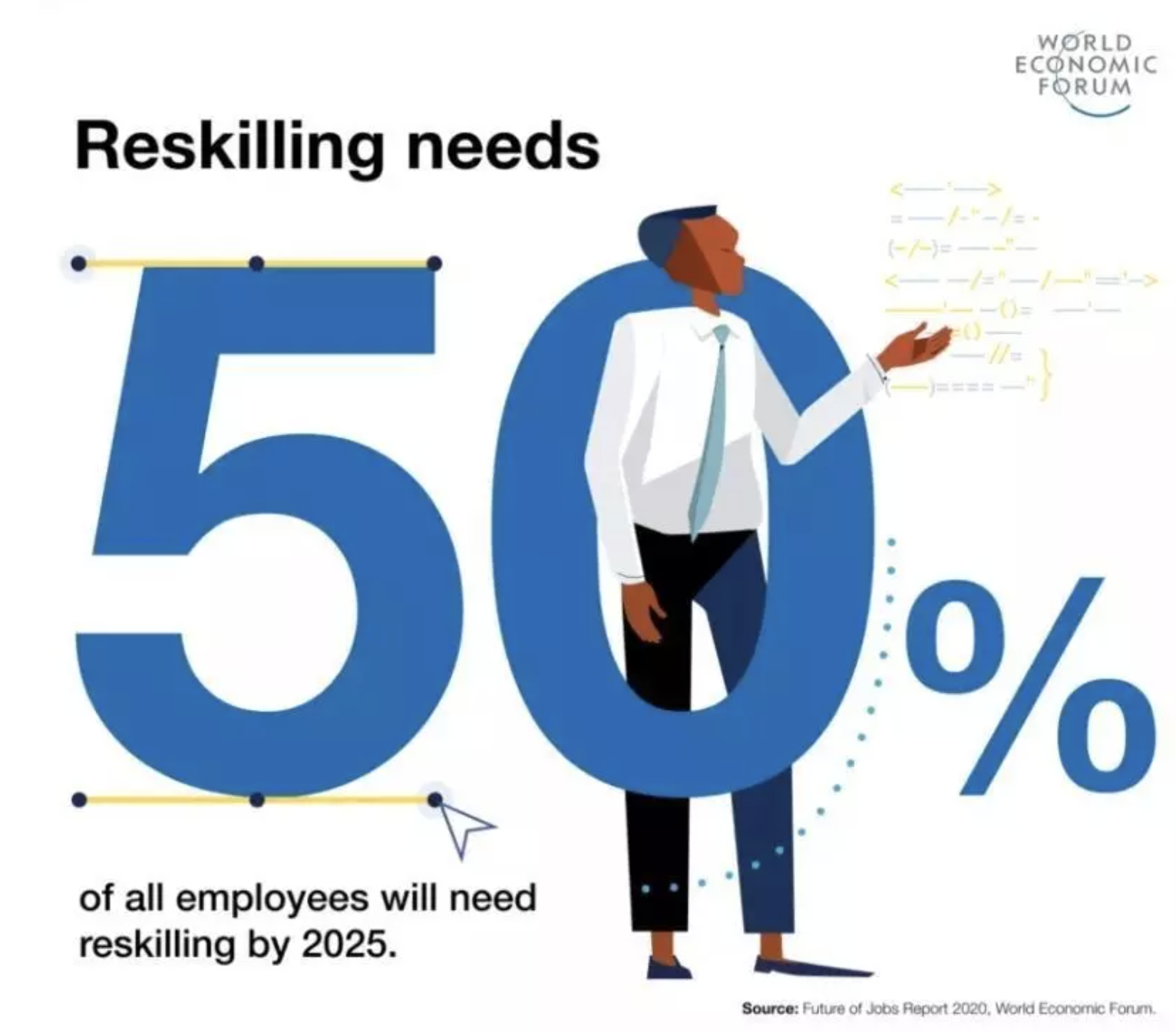- The Forum’s Future of Jobs report pointed to the double disruption of automation and pandemic, with 85 million jobs displaced by 2025. But among those set to remain, 50% will need reskilling by 2025
- To rise to the challenge, four critical areas – universal digital learning, micro-credentials, skills-based credentials and hands-on learning – will require coordinated attention from governments, the private sector, donors, and civil society.
In January this year, the World Economic Forum (WEF) launched the Reskilling Revolution platform with an ambitious goal to provide one billion people with better education, skills, and jobs by 2030.
A lot has changed since then. The Forum’s latest Future of Jobs report pointed to irreversible trends impacting the skills landscape. The double disruption caused by automation and the pandemic is likely to displace 85 million jobs by 2025. Among those set to remain in their roles, 50% will need reskilling by 2025.
The staggering scale of the challenge means that we need to look beyond conventional wisdom for solutions. Setting aside the pandemic’s near-term economic consequences, the moment represents an opportunity to rebuild an inclusive, modern, and scalable skills development paradigm. The combined forces of online learning and remote work – especially with the exploding growth of entry-level digital jobs that can be done remotely – promise a future where anyone, anywhere has access to both high-quality learning and high-quality job opportunities.
will require coordinated attention from governments, the private sector, donors, and civil society.
Provide universal access to connectivity and devices
Millions of graduating students and workers are doubling down on learning new skills, albeit remotely. But the pandemic has made it clear that those with unequal access to digital devices, internet connectivity and reliable electricity are the worst hit.
The pandemic has fueled innovative experiments around the world. As Kenya looked to quickly widen internet coverage, it deployed Loon balloons — a network of high-altitude balloons that created an aerial 4G wireless network to provide internet connectivity to students in remote communities. A continent away, Peru looked to solve a more fundamental challenge. In areas with no electricity, the tablets were delivered with solar chargers.
Governments and institutions worldwide must come together to find ways to fund devices. Every year, companies retire millions of laptops, which can be easily redistributed to those in need. Lebanon-based organization, Thaki, uses ‘donated laptops’ to enhance digital literacy with creative learning solutions for vulnerable youth.
Building mobile-friendly learning experiences need to be part of any job readiness initiatives. On Coursera, 52% of learners use mobile to access the platform. On the Edraak platform, 70% of MENA learners use mobile devices to acquire new skills. Policy-makers have to find ways to ramp up broadband infrastructure and bring down data costs. For example, Nigeria is looking at reducing data costs as online learning becomes a new reality for students in the country.
We find that students around the world value the option to download, learn, and complete courseware offline – especially in regions where access to the internet is unreliable or expensive. Edraak partners with three telcos in Jordan to zero-rate its K12 platform. Similarly, telecom operators in Egypt subsidized internet traffic related to education.


